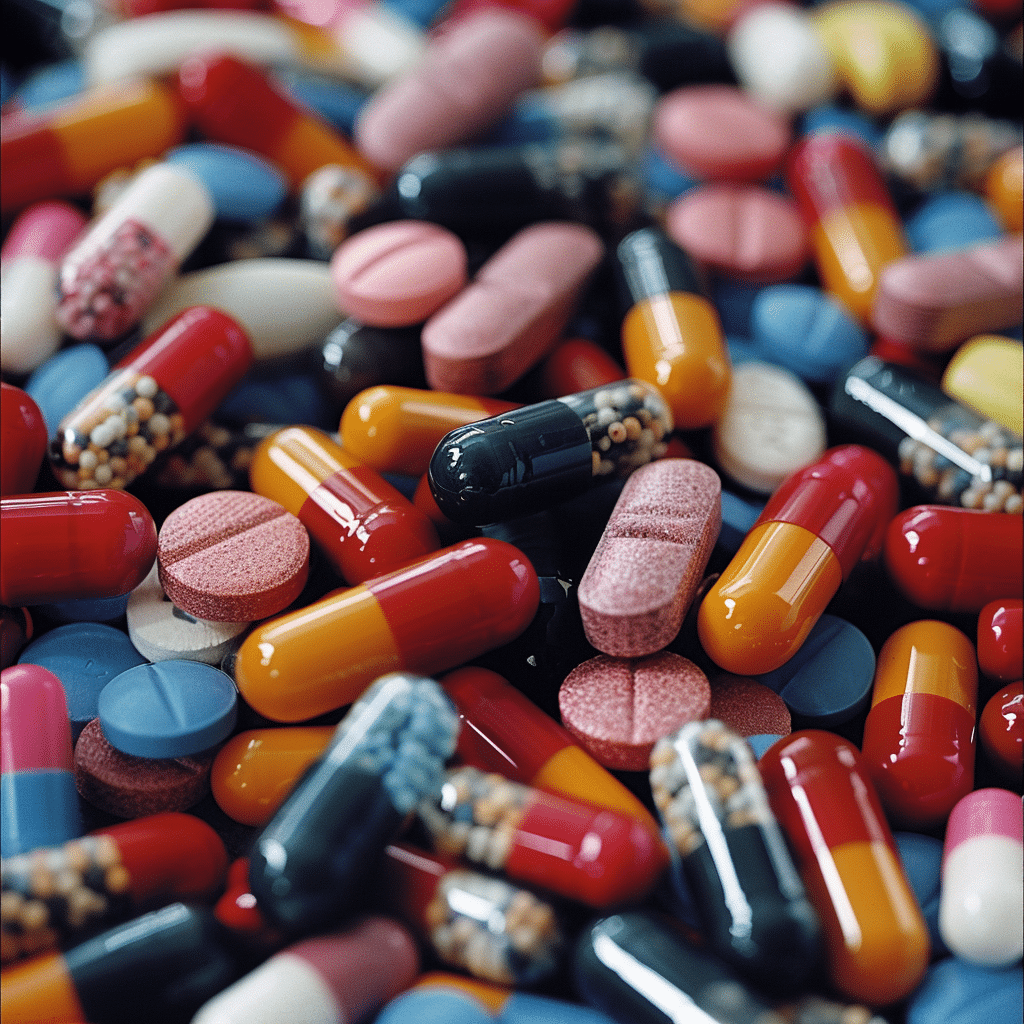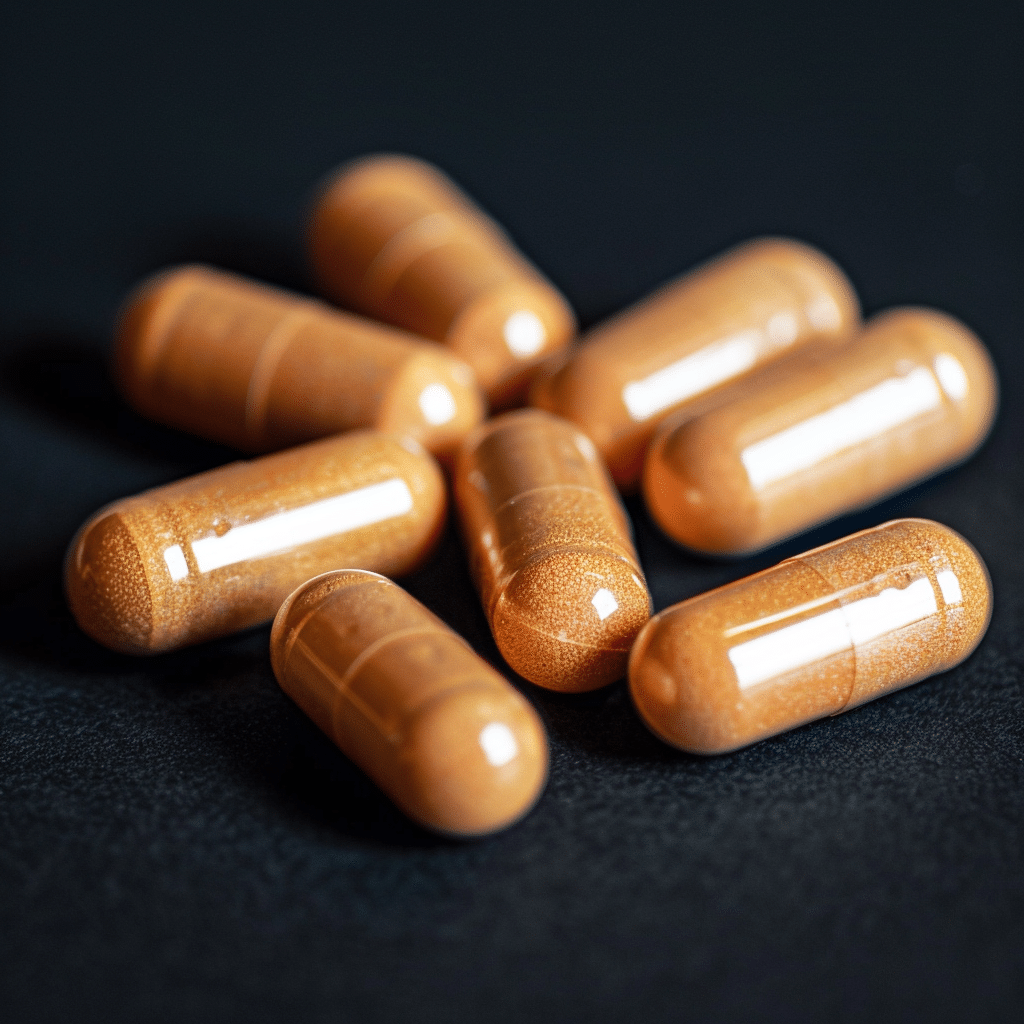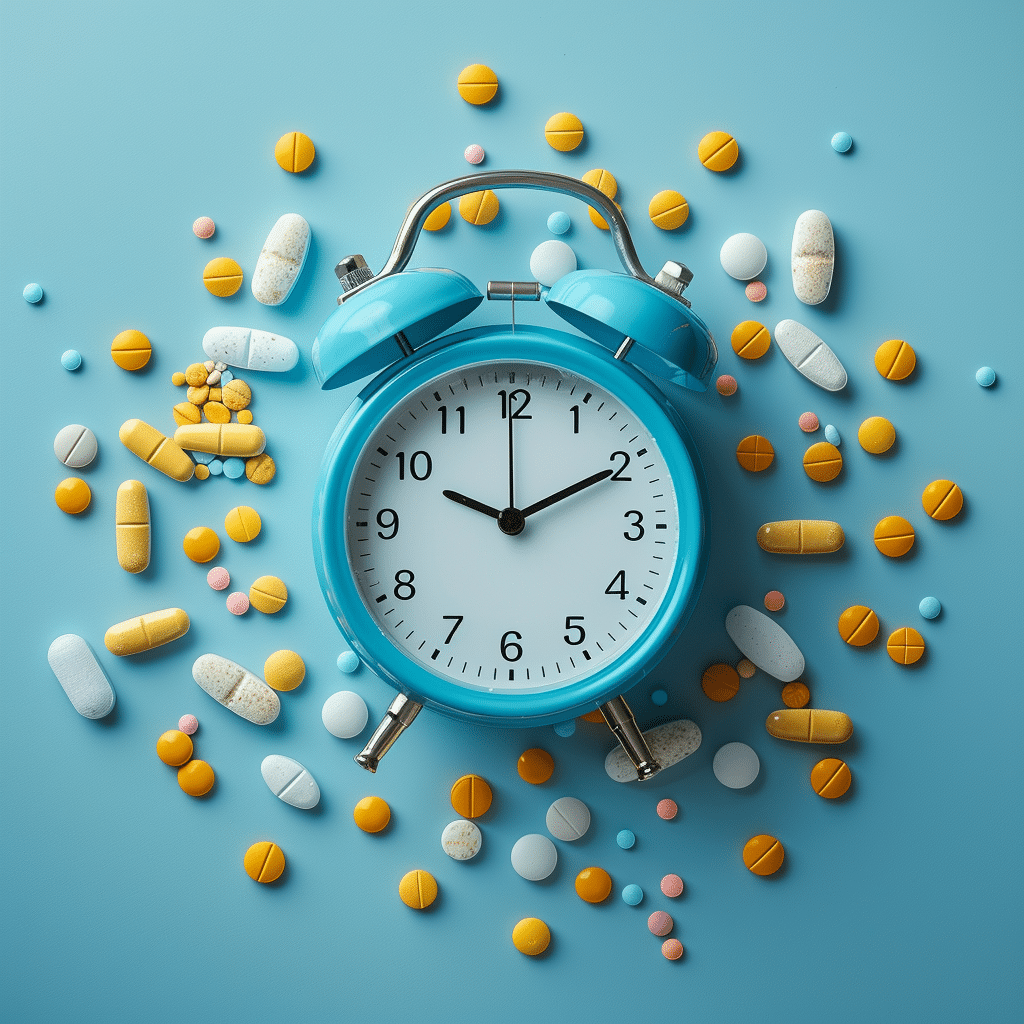How Long Does Lexapro Stay in Your System?
Venturing into the world of medication, especially for mental health conditions, can be daunting for many individuals and their families. Lexapro, also known as escitalopram, is one such beacon of hope for those battling depression and anxiety. But what happens when it’s time to part ways with this ally? “How long does Lexapro stay in your system?” becomes a crucial question. Let’s embark on a journey to understand the endurance of Lexapro in the body and the implications of its farewell.
The Timeline for Relief: How Long Does It Take for Lexapro to Work?
Lexapro, the brand name for escitalopram, is frequently prescribed to relieve symptoms of depression and generalized anxiety disorder. As a selective serotonin reuptake inhibitor (SSRI), it works to balance the chemicals in our brain that affect mood and emotions.
Here’s the rub: while some may notice a boost in spirits pretty quickly, Lexapro isn’t a magic bullet that works overnight. The drug takes about 2 weeks to build up to steady levels in the bloodstream, according to research published on November 28, 2022. That’s when we really start seeing the veil of gloom lift.
Peeking at the pharmacokinetics of Lexapro, it hits peak concentration in the blood roughly 5 hours post-intake. So, buckle up because it’s a bit of a ride before significant improvements wave hello.
The onset of Lexapro’s action is like a seedling pushing through the soil—it requires patience. Empirical data indicates that a fair share of patients might only experience the full blossoming effects after up to 8 weeks. It’s a marathon, not a sprint, folks.

Tracing the Lifespan: Lexapro’s Presence in the Body
Now, let’s dive into how long Lexapro lingers in your system. The half-life of a drug is its stopwatch, timing how long it takes for half the dose to be metabolized and kicked out by the body. For Lexapro, that’s about 27 to 32 hours.
What does this mean for you? If you’re riveting jeans and choreographing TikTok dances at a fast clip, aka you have a speedy metabolism, Lexapro may bid adieu sooner. But other factors like dosage and even genetics can stretch its stay. Typically, it can take several days, even over a week, to saunter out of your system completely.
Arm yourself with knowledge because understanding these timelines helps manage expectations and keep worry at bay. It’s crucial when pondering how to flush Lexapro out of your system and what this process entails.
| Feature | Information |
|---|---|
| Generic Name | Escitalopram |
| Brand Name | Lexapro |
| Drug Classification | Selective Serotonin Reuptake Inhibitor (SSRI) |
| Indications | Major Depressive Disorder, Generalized Anxiety Disorder |
| Half-Life | Approximately 27-32 hours |
| Time to Peak Concentration | Around 5 hours after dosing |
| Steady State Concentration | Achieved after approximately 2 weeks of daily intake |
| Withdrawal Symptoms Potential | Insomnia, nausea, irritability, headaches, etc. |
| Recommended Withdrawal Approach | Gradual tapering to prevent withdrawal effects |
| Time to Clear from System | Approximately 6-7 days (5 half-lives for majority of clearance) |
| Monitoring Importance | Daily intake more critical than specific timing for effectiveness |
| Notable Withdrawal Information | Brain adjusts post-medication, varying individual outcomes |
| Date of Last Update | April 19, 2023 |
Lexapro Withdrawal Curve: Recognizing the Signs and Symptoms
When it’s time to say goodbye to Lexapro, your body may toss some confetti—but sometimes it’s those annoying itchy kind. Withdrawal symptoms can range from insomnia and nausea to irritability and thumping headaches. These symptoms sing ‘au revoir’ on different notes for everyone, appearing within a few days and potentially sticking around for up to 6 weeks.
The withdrawal curve isn’t a cookie-cutter experience—it’s more like your unique fingerprint. Typically, these unwanted party guests taper off gradually, allowing your body’s natural rhythms to recalibrate and regain control. Remember, this transition is like crossing a stream on stepping stones—you might get your feet wet, but you’ll reach the other side.

Flushing Out the Remnants: How to Flush Lexapro Out of Your System
Many folks wonder about pressing the fast-forward button on Lexapro’s departure. Is there a legit playlist of tricks to hasten the process? From guzzling water to tweaking your diet, certain methods claim to speed up detox. But here’s the deal—your body has its own rhythm, and forcing the tempo might throw it off.
That said, keeping hydrated and maintaining a balanced diet can never hurt. Hydration, in particular, can be instrumental in helping to eliminate toxins from your system. But let’s not get too wild with these methods without chatting with a healthcare pro — safety first, always.
A medical detox could be a ticket for some, a carefully orchestrated plan monitored by doctors who specialize in unraveling the knot of medication from your system. This approach ensures the journey off Lexapro is as smooth as a glide on a Roaring Fork valley ski slope.
Evaluating Dependency: Is Lexapro Addictive?
Here’s the tea—Lexapro isn’t typically branded as addictive in traditional terms. However, your noggin gets rather cozy with it, and that dependency tango can be complex. Disentangling your brain from Lexapro’s warm embrace needs finesse and often a gradual easing off.
Comparing Lexapro to other antidepressants, it’s often viewed as having a lower risk of dependency. Yet, the plot thickens when we consider psychological versus physical dependence. More often than not, dependence on SSRIs like Lexapro tends to not be in the same ballgame as other substances that can cause addictions.
Still, questions pore over research as to can You overdose on Lexapro or the nitty-gritty of its addictive potential. It’s clear that for some, Lexapro becomes an integral part of managing their mental landscape.
Navigating Withdrawal: Strategies for Mitigating Lexapro Discontinuation Effects
Say you’re ready to break up with Lexapro. The golden rule? Slow and steady wins the race. Healthcare buffs suggest tapering off is the way to go, trimming the dose bit by bit to let your body down gently, like a feather floating down from the sky.
But it’s not just about dosages. Alternative therapies sparkle on the horizon: think support groups, talk therapy, and maybe yoga to keep your cool. It’s like donning your favorite women’s ski goggles—you’re protected and ready to face what’s ahead.
Stories abound—real-life warriors who’ve sailed the withdrawing seas and arrived on tranquil shores. These anecdotes serve not just as proof of the pudding but also as a compass and a companion for those following in similar footsteps.
The Role of Patient Support During Lexapro Withdrawal
It’s undisputed—embarking on the Lexapro withdrawal journey solo is akin to trekking the Sahara without a map. The network of healthcare professionals, family, and pals turns the odyssey less daunting. These earth angels can sense the tremor in your voice and provide the scaffolding of support.
Resources, akin to a treasure map, exist far and wide, whether within your local community, or nestled within digital realms, like the Blake Michael library of wellness materials or the support fostered in the Roaring Fork Valley community.
Education, like a sturdy beacon of light, alleviates much of the anxiety surrounding withdrawal. Knowing the whys and hows empowers individuals to take the reins and charge ahead with resilience.
Innovative Approaches to Managing Withdrawal: A Look at Emerging Practices
The realm of managing Lexapro withdrawal is ever-evolving, with frontiers pushing for more ingenious and less invasive ways of supporting individuals. Picture this: mindfulness techniques and acupuncture being part of the mainstream withdrawal toolkit. The spotlight shines on holistic practices, and integrative medicine is stepping up its game.
The vivid tapestry of emerging practices is akin to a Skyn care routine—it’s personal, evolving, and has the potential to nurture. The blend of traditional and modern therapies is a symphony creating a more harmonious paradigm for mental health care.
Conclusion: Moving Forward After Lexapro Withdrawal
Understanding the nitty-gritty of Lexapro’s withdrawal impact is akin to holding a compass in the wild—it orients us and sets the pace for the journey ahead. Knowledge of the medication’s persistence in the body, the signs of withdrawal, and the methods to manage it is like a trusty best sound bar—it fine-tunes our experience, ensuring clarity and confidence as we step forward.
The call to arms? A multidisciplinary, patient-tailored blueprint that speaks to the diversity of every individual’s journey. Our parting shot is a call to the collective—a rally for continuous research and unwavering support. It’s a chorus championing mental health and personalized care that dances to the melody of every unique story.
So whether you’re tracking Signs Your liver Is healing From alcohol or navigating the waters of Lexapro withdrawal, remember, the voyage may be complex, but with the right map, the stars to guide you, and a strong crew, you’ll find your way home.
Navigating the Slopes of Lexapro: Understanding How Long It Stays in Your System
Whoa there, folks! We’re about to head down the slippery slope of understanding Lexapro withdrawal and just how long this little pill can hang around in your system. Buckle up, because it’s like hitting the slopes without your Women ‘s ski goggles; you want to be clear on what’s ahead.
The Half-Life Hullabaloo
Alright, let’s break it down—no medical jargon here, just plain ol’ English. Imagine Lexapro as your trusty ski instructor; it’s been guiding your brain down the mountain for a while now. But when it’s time to part ways, it doesn’t just poof disappear into thin air. It’s got what the docs call a ‘half-life,’ which means it takes some time before half the drug has left your chattin’ chambers (that’s your body, by the by).
So, how long does Lexapro stay in your system? Usually, Lexapro’s got a half-life of about 27 to 32 hours. But don’t just multiply by two for the whole enchilada; every person’s body is like a snowflake—unique. It can take several days to a few weeks to take the last chairlift out of your system.
The Long Goodbye
Now, you might be wondering, “If it’s only a couple of days for the half-life, why isn’t Lexapro out of my system faster?” Well, buttercup, that’s where it gets a smidge complicated. See, Lexapro is sorta like that snow that compacts on your boots—it accumulates. Before you know it, saying goodbye is like trying to shake off that last bit of snow before hopping in your ride home.
Because of this accumulation effect, it can take anywhere from a week to even six weeks to completely say adieu to Lexapro. Remember though, it’s not a one-size-fits-all situation. Just like when you’re picking out those stylish ski goggles,( you gotta find the one that fits you best.
Feeling Foggy? That’s Withdrawal for Ya!
Hey, ever felt that foggy brain after a day on the slopes? Well, when you kick Lexapro to the curb, your brain might feel a bit like it’s still wearing those goggles( indoors. It’s readjusting to life without its slope-buddy, which can lead to all sorts of funky feelings, like zaps, mood swings, and sleep funk.
It’s a bumpy ride, but hold tight—your brain’s a trooper and it learns to ski solo again. Just remember, when it comes to how long does Lexapro stay in your system, give yourself some grace. It ain’t a race to the bottom; it’s more like a leisurely last run of the day.
A Parting Snowflake Thought
Don’t go cold turkey, folks. That’s like skiing blindfolded—just plain risky. When saying sayonara to Lexapro, have a chat with your doc, and let them help you slowly come down the mountain. And hey, while you’re at it, hold onto your metaphorical ski goggles;( you might need ’em for another run or in navigating through the blizzard of withdrawal.
So, how long does Lexapro stay in your system? Like any seasoned skier will tell ya: it all depends on the trails you’ve been hitting, but eventually, you reach the cozy lodge at the end. Happy trails to your neurotransmitters, and here’s to smooth skiing ahead!

How long does it take for Lexapro to wear off?
– Lexapro, like your favorite slow-cooked chili, takes a while to simmer down in the system; it typically reaches steady levels in the blood after about 2 weeks of daily dosing, but when the decision is made to say sayonara, there’s no precise countdown. The medication gradually fades away, and your body might miss its regular visitor for a bit.
What happens when you stop taking Lexapro?
– When you bid farewell to Lexapro, it’s not just a simple ‘see ya later!’ Your brain might throw a bit of a tantrum – think insomnia, nausea, or even a headache or two. Gradually tapering off, though, is like easing into a hot bath, it can help dodge those not-so-fun withdrawal symptoms.
Do you go back to normal after Lexapro?
– Alright, here’s the scoop: After you wave goodbye to Lexapro, your brain’s like, “Okay, what’s the game plan?” It’ll start adjusting, trying to get back to its old routine pre-medication. This shift can be as unpredictable as a mood swing – some might slide back to their old selves, others might find a new normal.
When is Lexapro at its peak?
– Lexapro hits its stride about 5 hours after you’ve popped it, sort of like that second wind you get mid-afternoon. But remember, it’s not a sprinter – give it a good couple of weeks to show off its full power in the bloodstream consistently.
What is the hardest antidepressant to come off of?
– Talking toughest antidepressants to ditch? It’s like asking which shoe’s the hardest to untie—it varies. Some say SSRIs, or their tricky cousins, SNRIs, can be real stinkers to step away from, thanks to withdrawal symptoms that stick like gum on your shoe.
Will I lose weight after stopping Lexapro?
– Dreaming of dropping some pounds after you and Lexapro part ways? It’s possible! While some folks experience weight changes on the pill, there’s no guarantee you’ll shed weight like a winter coat in spring once you stop. Bodies can be unpredictable like the weather, after all.
How long does it take to wean off Lexapro 10mg?
– Weaning off Lexapro 10mg isn’t a sprint; it’s more like a leisurely stroll. Typically, it’s a gradual taper, meaning you might cut down slower than molasses, over several weeks or even months. Patience is key, like waiting for a pot to boil.
Is 5 mg of Lexapro a lot?
– Is 5 mg of Lexapro a lot? Well, it’s all relative, like whether a cup of coffee is strong. For some, it’s just right, aiding their battle against anxiety without going overboard. For others, it might just be the starting point.
Is 5mg of Lexapro effective for anxiety?
– Can 5mg of Lexapro take the edge off anxiety? Absolutely! For many, it’s like a trusty seatbelt during a bumpy flight – not too tight, just secure enough to give that calming hug.
How long does it take for your brain to recover from Lexapro?
– Recovery time for your noggin after Lexapro is like asking how long a broken heart takes to mend – it varies. The brain gently eases back into its pre-Lexapro groove, but whether it takes a quick minute or a lengthy sabbatical, it’s a personal journey.
Does anxiety come back after stopping Lexapro?
– Will anxiety waltz back in after you stop Lexapro? It’s like weather forecasting – tricky. Some might find their old anxious shadows creeping back, while others continue to soak up the sunny, calm vibes.
What are the benefits of coming off antidepressants?
– The benefits of quitting antidepressants? Imagine finally taking off that heavy backpack after a long hike. Some find a pep in their step with newfound energy, clearer thinking, or even a more vibrant mood – but remember, results may vary!
How long should you stay on Lexapro for anxiety?
– Settling in with Lexapro for anxiety is like getting comfy in those jeans that fit just right – you might hang out together for a good 6 months at least, to see if it’s a perfect match for keeping those jitters at bay.
What is Lexapro success rate?
– Lexapro’s success rate in quelling anxiety? Picture it like a hit rate for a baseball player – pretty good! Though it’s tough to pin down exact numbers, many find it knocks their anxious thoughts out of the park.
Is 2.5 mg of Lexapro enough?
– Some may query if 2.5 mg of Lexapro can do the trick – it’s a bit like dipping your toes in the pool to test the water. For some, this minimal amount might be just enough to ease that gnawing anxiety without diving into deeper waters.
What happens if you stop taking Lexapro cold turkey?
– Going cold turkey off Lexapro? Woo boy, brace yourself! It’s like quitting coffee in a snap – prepare for a possible whirlwind of withdrawal symptoms, and maybe a headache that could rival your worst Monday.
How long should you stay on Lexapro for anxiety?
– Deciding how long to stay the course with Lexapro for anxiety is like figuring out how many layers to wear in unpredictable weather – it’s individual. Most docs suggest at least 6 months to let it do its thing, but stay in touch with your doc to tailor it to your personal forecast.




























